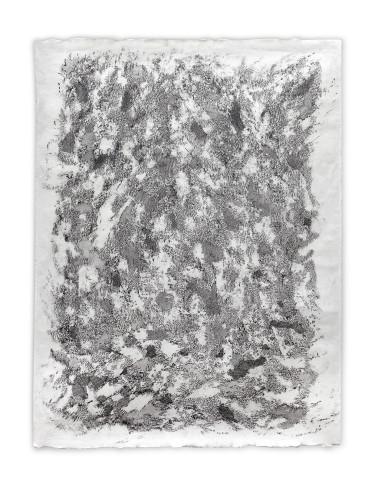
Mental landscape XLVII
Graphite on rice paper.
64 x 50 cm

Mental landscape XLVII
Graphite on rice paper.
64 x 50 cm
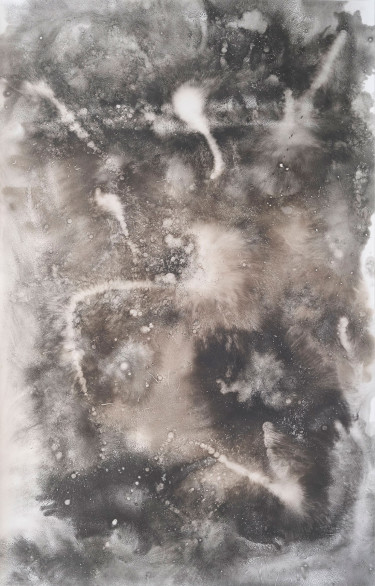
Sedimentos XXX
Graphite and pigment on paper.
140 x 89 cm

Mental landscape XXXV
Graphite and colored graphite on rice paper.
64 x 50 cm
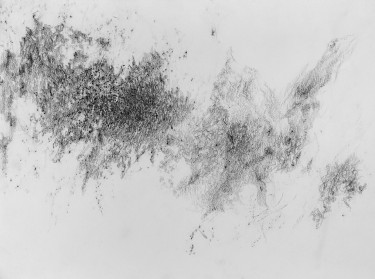
Estudio II
Graphite on paper.
30 x 40 cm
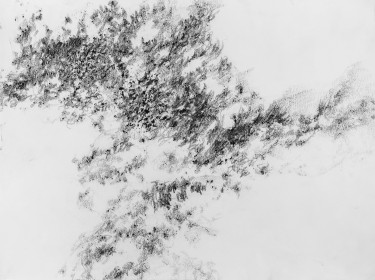
Estudio III
Graphite on paper.
30 x 40 cm
The conjunction
The outline/design of a drawing incorporates everything. It reveals the materiality, the previous stage, as well as the idea. It has the ability to reveal things that don’t exist yet. Not only does Mariana Sissia draw, but she thinks in drawings; she transforms mental activities into graphite drawings. She presents it like an idea, like a medium which enables her to create a thread of concepts that define her as an artist.
The Conjunction is a demonstration of the artist’s cosmovision: it devises new questions and introduces series that create a code. She approaches the drawings on a physical as well as an esoteric level; like a universe that contains visual as well as spiritual beliefs, notions and concepts. It involves an encounter between paths and perspectives, of which each drawings speaks in an enigmatic and fragmented way, leaving footsteps that reveal the cartography of Mariana’s work.
This territory, drawn as the result of a collaboration between the pieces, creates a conceptual foundation for the artist. In The Conjunction, she seeks the union of opposing pairs: hyperrealism edged by abstraction, which in turn moves to the rhythm of pure graphite laid on paper—and vice versa. It is an act of reconciliation between distinct parts, one that constructs Sissia’s worldview and reaches, in Jungian terms of the conjunction, something akin to a religious rite, an otus divinum. That state —where matter condenses into spirit, or in this case, where the ethereal becomes material through the work— is the sacred space of her practice.
The images obtained touch different parts of the idea of origin, the beginning of form and of matter. The circular shape, seen in the series of mandalas or in some of her graphite drawings, remind us of the perfect shape, or of drawings found in bas-reliefs dating back to ancient times. On the other hand, these primal images are also present in the explosions of colour against the dark backgrounds. The textures emerge from the paper as if they’d always been there, and Sissia helps them out from the surface. Landscapes that look like a big bang: that moment just before everything, that moment just before nothing.
The drawings produced between 2018 and 2023 encompass in some ways all of Mariana’s production. Figuration and abstraction come together in total harmony, like complementary opposites. Here, the meeting between perceptions do not clash, rather they are an invitation to find a balance between reason and spirituality. The approximation of these two universes is nothing other than a means to make the invisible visible, to pour out the inner explosion onto paper, and transform introspection into an outpour of graphite. In the face of something as sacred as this encounter with the work of art, the artist offers various ways of interpreting it. These primal concepts, original/native/primal to humanity, are at the drawing’s disposal. Drawing being the essential language of the arts, the one that grasps ideas and helps them come into being.
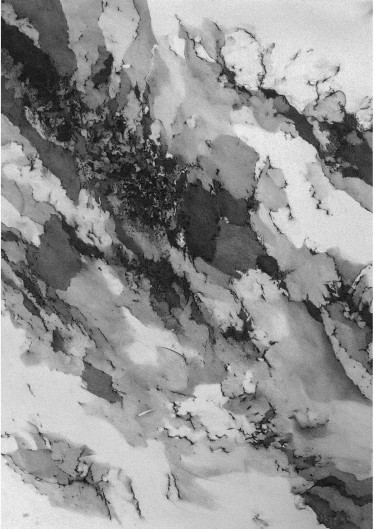
Mental landscape I
Graphite on paper.
70 x 50 cm
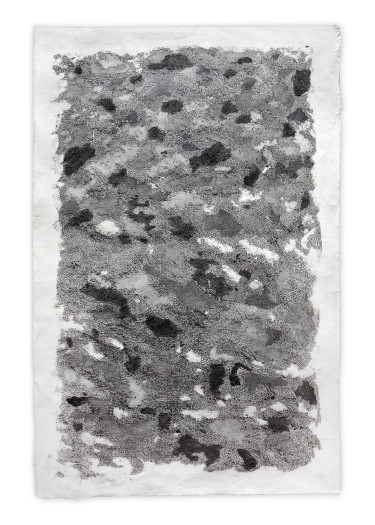
Mental landscape XLVI
Graphite on rice paper.
100 x 66 cm
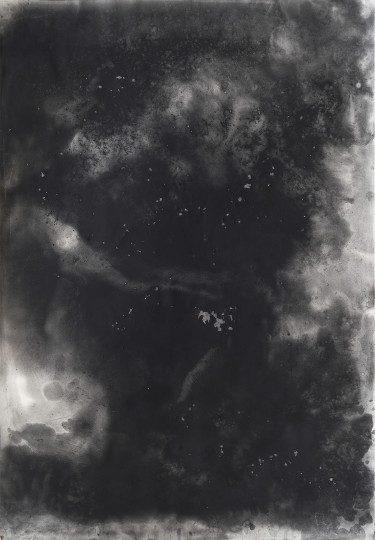
Sedimentos XXII
Graphite on paper.
100 x 70 cm
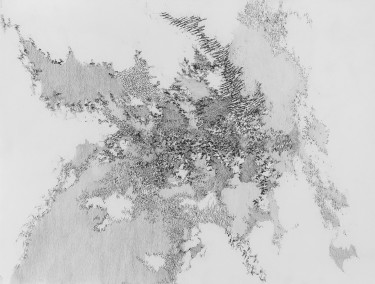
Estudio IV
Graphite on paper.
30 x 40 cm
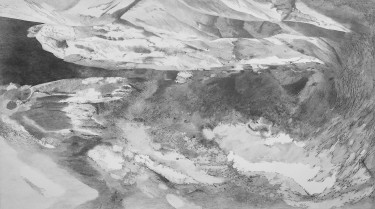
En otro mundo la belleza es extraña III
Graphite on paper
140 x 250 cm
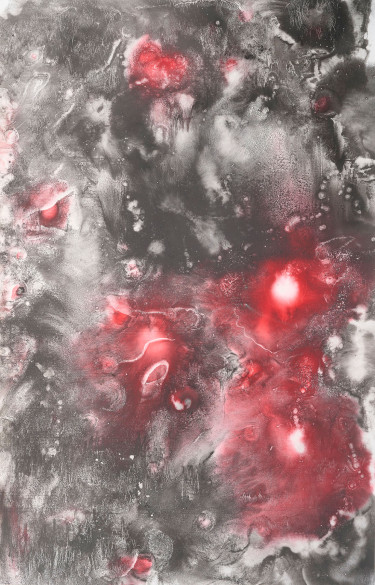
Sedimentos XXXIII
Graphite and pigment on paper.
140 x 89 cm
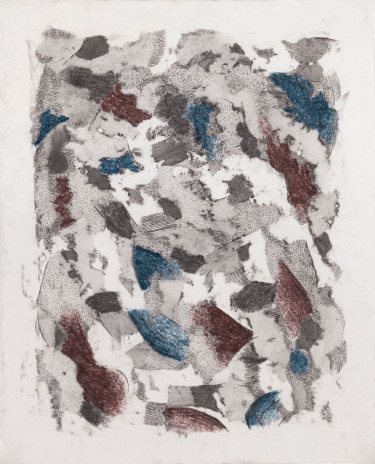
Mental landscape LVI
Graphite and colored graphite on rice paper.
64 x 50 cm
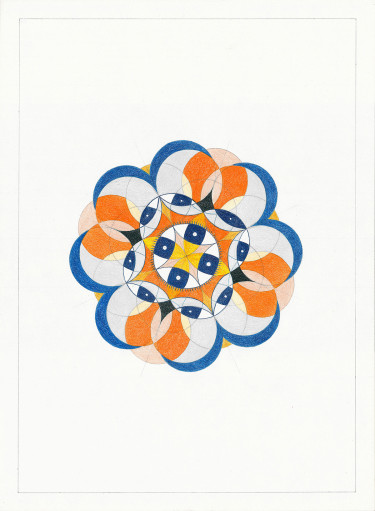
Mandala III
Graphite on paper
42 x 29,7 cm
Extensions of the spirit
“Though it is not an extended thing, thought has its own extension and extends in its own way, which consists in never actually becoming extended.”
Marie Bardet
Minds less brilliant than René Descartes have often mistaken the terms of his celebrated distinction between thought and the extended thing. The fact that the RES COGITANS is never an already extended RES does not mean that it does not extend. But thought –perhaps unlike matter– extends endlessly with no boundaries, delimitations, or destination.
Borges asserts that “the terms of an infinite series admit any number”, and that “If space is infinite, we may be at any point in space. If time is infinite, we may be at any point in time”. Happen what may in the external world of bodies, this is precisely what happens within the realm of thought.
Mariana Sissia understands this clearly, distinctly. Her landscapes are landscape of the COGITO, of the mind engaged in the act of thinking. There is no room in them for references, cardinal points, or geodetic coordinates. They contain no up or down. The fact that, in them, any attempt at cartography or navigation is doomed to fail does not means that the artist does not turn to those terms as concepts in an image potentially endless as well.
What the image depicts is a possible world never given over to the experience of the senses. Her –slightly dreadful– interest lies in the enormous difficulty that contemplation entails. How to explore a lands- cape like this? Where to begin? What direction to take? Where to end? Unfathomable as material, for sensibility the landscape of the spirit is also the landscape for the spirit.
Vague and incorporeal despite its undeniable consistency, the mental landscape that Mariana shows extends perhaps to the limits of the perceptible but not beyond the limits of the thinkable. Not yet extended, it extends precisely in order to be thought, indefinitely and endlessly by those who take on this arduous act of contemplation.

En otro mundo la belleza es extraña II
Graphite on paper
140 x 250 cm

Mental landscape XXIX
Graphite and colored graphite on rice paper.
129 x 97 cm

Mental landscape XIII
Graphite on rice paper.
36 x 120 cm

Mental landscape XIX
Graphite and colored pencil on rice paper.
52 x 42 cm

Mental landscape XL
Graphite on rice paper.
43 x 31 cm
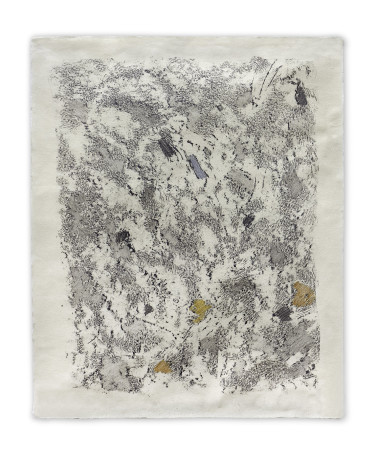
Mental landscape LI
Graphite and colored pencil on rice paper.
52 x 42 cm
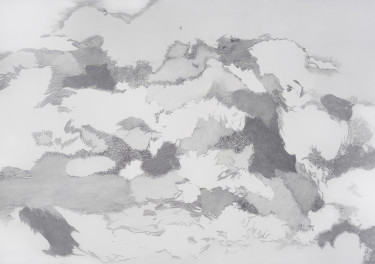
Mental landscape LVIII
Graphite on paper
140 x 200 cm
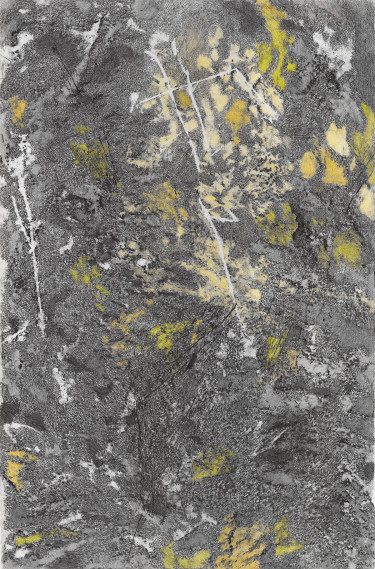
Mental landscape LVIV
Graphite and colored pencil on rice paper.
100 x 66 cm
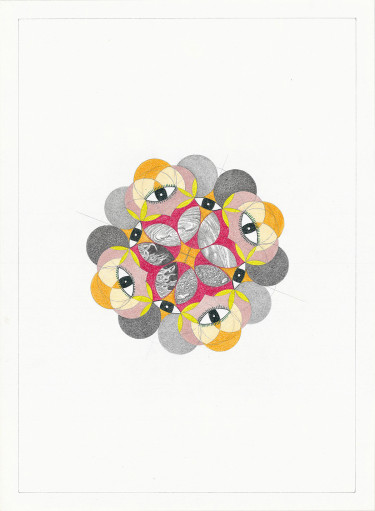
Mandala IV
Graphite on paper
42 x 29,7 cm

Mental landscape XXXIX
Graphite on rice paper.
43 x 31 cm
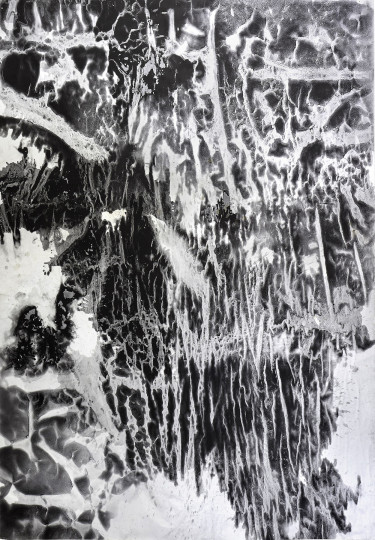
Sedimentos XI
Graphite on paper.
300 x 200 cm
Mentalist
A plane power. A ghostly density of plane power. A more expanded density, less expanded (more or less expanded), but always in an extension plan.
A basketball court with all the players lying on their backs and, apparently, without moving. Are they completely still? It seems so. (Are they on a break, in a half-time? We cannot be sure about that) As spectators, we try to find the ball. It is wrapped in a silk scarf. (Behind, there is an opened window. A window without glasses and no sound comes out from it.) The ball is hidden and, since it is a basketball tournament, the players lie inexplicably still. But if we focus our camera and zoom in, we would have a revealing view: the players give in to small pleasures, move their eyes in a circular way and they stroke the parquet flooring with their fingertips. Slowly and rounded.
Registered under this sign:
Half the energy
In life
repeated many times
(That is the mantra repeated internally)
Perhaps the spectators start leaving. And it has to be quite clear: these basketball players do not want to attract anybody, and in no way they convince us that what they are doing has to be entertaining for everyone. So, if someone stays, if days go by and someone continues observing this almost imperceptible game, the players turn 25 degrees, wink at the grandstand and those who were spectators are now part of the team. That’s the way they move around. Ghostly densities in a sectarian game.
A crowd of tiny insects on a vine leaf. Each one is a thousandth of a millimeter. The vine leaf is covered by insects on one side. On the other side it is completely naked. Why did they stay on that side? Why did they choose that leaf? Why is it so difficult to understand what they are doing? Are they eating? Are they sunbathing? –We are hot! –says the smallest one. –We are sunbathing!
We are here for other reasons –answers a voice –We are scientists! We have a microscope! If there is no movement, if we still do not understand why they are all together and looking at the same side, we do not care! And if we do not reach a conclusion or we reach a wrong conclusion, we do not care either! We neither have theory nor enough preparation to make a hypothesis and we do not care. We do not care about anything! The only thing we want to see is that image amplified!
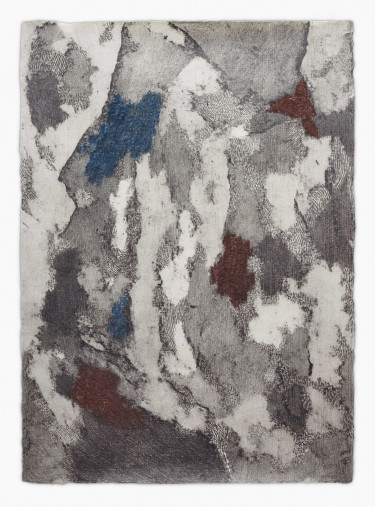
Mental landscape XXII
Graphite and graphite pencil on rice paper.
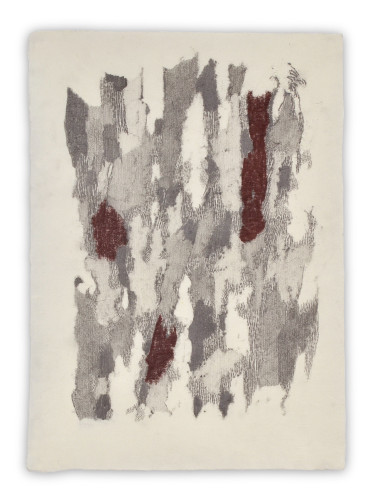
Mental landscape XXXVII
Graphite and colored graphite on rice paper.
43 x 31 cm
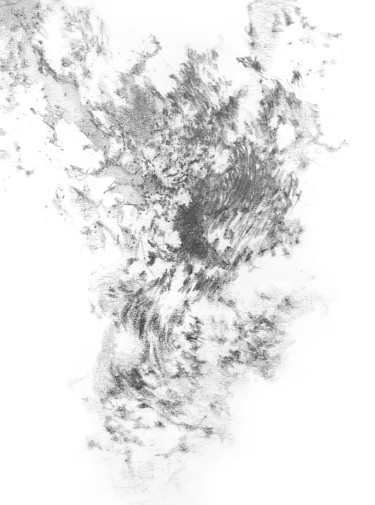
Ejercicio V
Graphite on paper.
30 x 40 cm
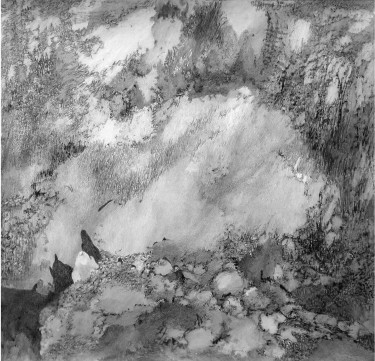
Composición I
Graphite on paper.
50 x 50 cm
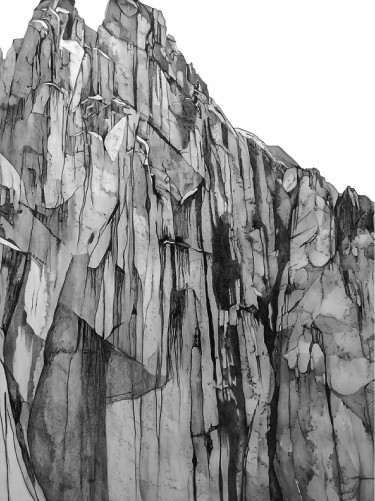
Sin título IV
Graphite on paper.
140 x 100 cm
The map and the territory
Hamlet points to the sky and turns to Polonius. “Do you see yonder cloud that’s almost in the shape of a camel?” Polonius, who has come in the service of the court to persuade the errant young man to visit his mother, the queen—follows the prince’s gaze. “By th’ mass, and ’tis like a camel indeed”, he answers obligingly. But Hamlet is unsatisfied, and draws the courtier further into his sky-gazing reverie. “Methinks it is backed like a weasel”, he counters. “It is backed like a weasel”, comes the somewhat impatient reply. But the prince isn’t through yet: “Or like a whale”, he persists. He is really testing the limits now, but the unimaginative, decidedly practical Polonius has no way of extricating himself from the banter; his courtly role forces him to be perennially agreeable: “Very like a whale”, is the only reply he can meekly proffer. Just when it seems the prince could play puppet master with the foolish old servant for as long as he likes, he abruptly ends the game: “Then I will come to my mother by and by”.
What is taking place during this brief interlude? Is Hamlet truly invested in this idle whimsy? Is he delaying the inevitable responsibility for avenging his father’s death with a few moments of childlike daydreaming? Is this one of the first indications that he is descending into genuine madness? Or is he simply stringing Polonius along, distracting him from his intended task? Perhaps, in this moment, Hamlet understands that the ability to free associate, to call to consciousness things that aren’t there, to interpret and interpolate one’s own perspective into the crude material of everyday life, is a way of retaining his humanity within the sinister chaos of the court. It is in these seemingly whimsical moments that the seeds of his later actions —both tragic and noble— are planted.
In the drawings of Mariana Sissia, the raw material of graphite and paper are used to explore the nature of thinking and acting. While the process of thinking tends to be understood as always and only internal, separate from action that takes place in the world, Sissia uses the drawn mark to merge a psychological experience with a physical one. Like Hamlet, she brings a new reality into being. And, like those of Hamlet, her visions are fleeting and personal, and they escape interpretation: their effect is cumulative, rather than linear. They do not resolve into narrative so much as they evoke dozens of narratives, natural and historical, aesthetic and social. Sissia calls them “Mental Landscapes”, suggesting that the mind is as rich a territory as any tangible one, and inviting the question: where does a map of the mind lead us?
LANDSCAPES
Sissia has described her process as a kind of introspective detective work, in which she reveals the inner workings of her mind through the meditative use of frottage on paper. These rubbings, by their very nature simultaneously controlled and freeform, evoke an incredible array of thoughts and images. As the artist told me:
I don’t have a plan before I start or, rather, the plan is not to have a plan ... to let [the drawing] take shape through the trace that the frottage leaves on the paper. On the basis of intuition, I decide which surface on which to rub the paper, the exact location on which to do the frottage, the blank spaces to be left, and how to interpret it. I conceive as a “script” that takes shape at random, one that I interpret according to my emotional state.
Yet for all the introspection and delicate meditation of these drawings, Sissia also evokes the astonishing variety of the natural world. Blooming flowers, volcanic eruptions, wet rocks in a stream, conifers fluorishing on a mountain’s face —the spread and expansion of these natural textures form a kind of unresolved landscape that floats transiently through the viewer’s consciousness. This thoughtful attention to landscape as mental space shouldn’t be surprising, since two of Sissia’s often-named influences are the Romantic painters Caspar David Friedrich and J. M. W. Turner, who both imbued pictorial representations of landscape with complex psychological resonance. Sissia shares their approach to the sublime, which suffuses the beautiful with an overwhelming sense of awe. She employs variously repeating elements that transform without pause from the delicately decorative —flowery shapes patterned on wallpaper— to the voraciously unyielding, as volcanic ash washes over the ground, subsuming everything in its path.
The relationship between surface and ground in these works is complicated by Sissia’s manipulations of the paper, which is built up with crabbed pencil lines that recall the knobbly trunks of trees, while in other places rubbed smooth like a pebble in the sea. When a gap in the drawing appears —the pencil thinning out to reveal the paper substrate— is the viewer descending into a formless abyss, or is it only the sun breaking through a cloudy sky? We imagine we can press our face against the soft fur of an animal that seems to appear in one densely layered thatch of lines, when the next moment this comfort falls away, to be replaced by the dizzying vertigo of a high aerial perspective. The environment is totalizing, and we cannot tell whether we are looking at a surface in front of us, as with a wall, or from above, as with a sweeping bird’s eye view. As the scales shift and worlds large and small rise and fall before our eyes on the paper, the artist complicates our notion of the line between the active experience of being in the world, and the aesthetic experience that takes place for the viewer of drawing.
Sissia’s technique suggests an introspective response to the Action painters of the mid-twentieth century, who emphasized the relationship between the physical process of making the work, and its physical presence in its finished form. Like Sissia, these painters sought ways to surround themselves with their work during its making. Yet in contrast to the extreme drama of certain gestural abstraction, her work is human scale. Again, the active and meditative converge in the drawings: Sissia has said she sees each drawing as “the mantra I repeat in order to reach a certain state. When my breathing has quieted and my mind goes blank, the drawing takes shape and expands like an organic substance.”
Even as we explore this complex environment with an intrepid sense of adventure, we are drawn into a more psychological reading of the landscape as well. Delicate fingers seem to have left their prints in a thousand places over the surface of each drawing, but how do we read the evidence they’ve left behind? Likewise, the confluence of shape and texture that occasionally resolves itself into a meticulous, handmade Rorschach test: with a sly hand, Sissia creates confusion between the random associative meaning of the inkblot with the carefully articulated visual significance assigned by an artisan. The raw materials of the world brim over with meaning, cultural, spiritual, and personal: pools of water coalesce into figures, smeared windows seem to suddenly reveal the handprint of Jesus. The surfaces of Sissia’s drawings seem to be the perfect reflection of a hundred forms of significance. Every day, our surroundings seem to ask us: What do you see? What does it tell you? How do you read it? Sissia seems to suggest that in these drawings, such contemplation is shared: she invites us into the stream of her consciousness, made visible by mark and texture. Like Hamlet, we watch the clouds go by, grasping at any meaning they might offer us before they disappear from sight; recognizing that it may all be an apparition produced by an active mind, but is no less significant for that.
MOVEMENT
Recently, Sissia has begun hanging her drawings in the middle of the gallery, allowing them to drape across empty space. As their intricate surfaces become voluminous, their stillness is occasionally disrupted: the drawings sway and bow when a visitor enters the room. While this movement does relate to certain forms of kinetic art, the drawings seem less independent than many of those works, more responsive to human activity. The more crowded a space, the more they move, creating the pleasant illusion that the drawings are social—excited by human presence. The literal movement in the room pleasantly echoes the implied, metaphorical movement of the forms on the page.
As they occupy the space with their twisting and leaning, the drawings’ fragility is revealed as a kind of muscular strength. They remind the viewer of a dancer’s body: the simplest movement can carry extreme power when it combines subtlety with absolute control. As with a skilled performer’s sweeping foot or curving wrist, each drawing seems to call up profound significance from extreme economy of means. Sissia cleverly uses the vacuum-like space of the gallery to remind the visitor that, even in a seemingly void-like space, there is constant activity and motion. A primary way she achieves this is through the boldness of size: her drawings billow and sweep like waves across the gallery. Sissia doesn’t think of this method of installing the work as performance, however; rather, it activates latent qualities in the drawings themselves. The surface of each drawing is such a light and deft exploration of the intersection between void and matter that Sissia’s placement of them in space feels particularly intelligent: they are constituted by air, so air is easily felt to be integral to one’s experience of them.
HISTORY
Because Sissia’s work presents an idiosyncratic and singular vision, it is perhaps no surprise that her influences are eclectic and far-reaching. The depth of her knowledge of Western art history is expressed in ways both rigorous and playful, as evidenced by her references to kinetic art and landscape painting, already mentioned. However, one can situate her drawings within a number of traditions that predate the more circumscribed boundaries of modern art movements, including tapestry, Asian scroll paintings, and cave painting. Each of these has a long and complex history, and Sissia’s engagement with them is an indication of the depth and breadth of her project.
Scroll paintings differ from most Western painting in the way that the viewer encounters them: while the latter are viewed at a distance, the former have historically been encountered close-up, at an individualized pace, as the viewer unrolls the piece him or herself. Often, scroll paintings are not made with the expectation that they will be viewed as a whole; rather, one appreciates them in stages as they are rolled and unrolled. One of the most striking qualities of such works is the elastic- ity of time: the phases of life of a warrior might be represented on a single sheet of parchment, depicting, for example, the young boy at his lessons jostling against his older self in the midst of combat on the battlefield. Sissia plays with this elasticity in her own way, as her abstract forms take shape and disappear, one after another, on an endless stage. Like traditional scroll painters, Sissia places a clear importance on format —the long, narrow sheets of thin, translucent paper— that is absent from Western drawing and painting, in which the rectangle or square is the default for most artists. Her use of rice paper underscores her debt to the scroll painting form. Sissia responds to this tradition in the making of her work as well: she has said that she starts each day on a new section of her drawing without looking back at her previous efforts, and often does not even view her larger drawings as a whole until the day of the exhibition opening.
Le Corbusier famously called tapestries “nomadic murals,” and for Sissia, who has referred to her own drawings as “conceptual architecture,” the confluence of the concrete and the ephemeral holds an evident appeal. As an ancient art form, tapestries were valued for their ability to depict grand scenes of religious, military or royal significance, while remaining easily portable, as they could be rolled up and transported as needed. Their simple, repetitive forms flirt with the decorative and domestic while conveying myths and history on epic scale.
Indeed, as Sissia’s rice paper surfaces float in the breeze, one begins to liken them to coats of arms, or delicate, drooping flags. At first their fragility seems to undermine their impressiveness, but then the viewer quickly realizes that all flags are made to move: unlike a stamp or a printed sign, flags gain their power from their visible motion, as they flutter and sway above capital domes or from the masts of ships. No matter how full of life and motion they are, they remain persistently in the realm of representation, never quite becoming “real.” It is this combination that is perhaps most intriguing: Sissia’s images, in their size and scope, demand attention and invite reflection, but they are also grey, blurred and inconclusive, and they raise more questions than they answer. There is a humor in Sissia’s insistence that her quiet, subtle forms be presented as unavoidable, unapologetic, even bombastic. There is something ceremonial about them, and they convey a tentative pride as they festoon the space, lending a sense of simultaneous solemnity and celebration. But what small nation do they represent? In the name of what humble people are these banners raised? Unlike tapestry, in Sissia’s cosmology, myths and histories are more evocative for their lack of specificity. Her work does not actually depict legible narratives, any more than they function as real architecture. If any signs or symbols are present, they should be read in a way akin to constellations, to be regarded with the same combination of significance and mystery which humans have sought and found in the stars for thousands of years.
Finally, Sissia’s drawings call to mind the most ancient drawings we know of—those found in caves dating from prehistoric times. One can easily imagine a horse or elk or spear-wielding hunter taking shape out of the grey tangle of graphite contours and furrows. It is thought that cave painting was a ritualistic practice: hunters depicted animals in order to conjure a more successful future hunt, while shamans adorned cave walls in the hopes of drawing out their power. Sissia’s meditative technique echoes this sense of drawing as spiritual. Her drawings also recall the strange placelessness of cave art: on the dark walls, animals and symbols float in a groundless space, detached from any sense of time or location. Imagining Sissia’s drawing on a wall in Lascaux, though, the viewer would find it difficult to say where the drawing ends and the stone surface of the cave begins. Imagined inside a cave, the blemishes on the wall would become part of the image; the patterns on each animal’s skin would blend with erosions and patches of dirt. The scrapes and abrasions in the paper caused by Sissia’s frottage technique even, in places, call to mind the direct intervention, the scratching or clawing, of living creatures. Every mark is also a rubbing, an incising, into the page; surface and substrate are inextricably linked. Like an archeologist, Sissia is excavating as much as she is drawing.
Why does Sissia draw? This most basic of questions leads to perhaps the most provocative exploration of the significance behind her work. Though many of her influences are to be found in painting, she emphatically grounds her work in the medium of drawing. What compels, again and again, her use of the pencil in so many permutations? Drawing is of- ten described as a kind of thinking: it is raw and direct, relatively unmediated in its relation between marking tool and substrate. Indeed, Sissia has said she does not use color in her drawings because she feels it will get in the way of the pure sense of gesture she is attempting to convey. The history of drawing is that of exploration and observation: drawings are used to articulate what the draftsman sees. The drafstman is an inventor whose every decision is visible in the final product, as a form of visual thinking, existing in the present tense, and always full of the potential for further embellishment. Sissia frustrates this expectation: her use of frottage is both evidence of her hand and its effacement; the technique creates a tension between the presence and absence of the artist.
Drawing is an intellectual pursuit, even a philosophical one; early theories of drawing invoked Plato’s notion of the representation of the ideal in nature. Sissia’s earlier landscape drawings were much more literal in term of this relationship: she would observe the view that interested her, and then attempt to reproduce it. Today, her drawings exploit the mimetic tradition by blurring the line between what she perceives and what she feels. She challenges the notion of precision in terms of observation: the lines in her work seem to create the boundaries not of distinct and identifiable shapes, but of blurs, smudges, and ambiguous forms. Drawing also allows an artist to build an image slowly. In Sissia’s case, individual marks accumulate to produce a paradoxically vast and cohesive landscape of gesture and tone. Her lines often seem to be following some path that the viewer cannot quite discern. While drawing has traditionally been understood as the ultimate medium of mimesis, she suggests that it might be used to undermine the very idea that nature is directly observable at all. Rather, there is a symbiotic relation- ship between the observer and the observed. Sissia’s drawings evoke the fact that experience is both something you enact, and something that happens to you. Life, as it is lived, leaves its mark on you.

Mental landscape XXX
Graphite on rice paper.
78,5 x 56,5 cm
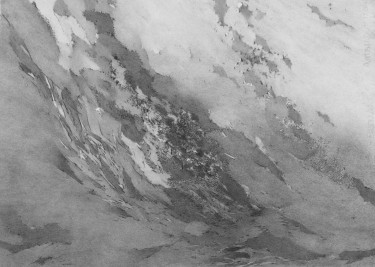
Mental landscape II
Graphite on paper.
50 x 70 cm

Tender
Braque prize.
Immigrant Museum, Buenos Aires.
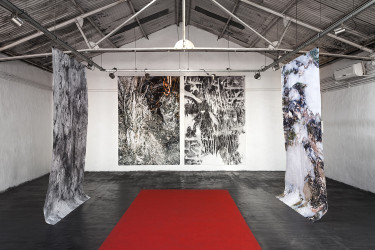
Otro altar
With Martín Pisotti
Festival
Buenos Aires, Argentina.

Mental landscape LV
Graphite on rice paper.
160 x 110 cm
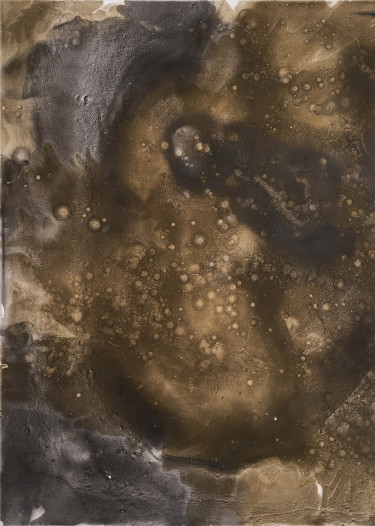
Sedimentos XXV
Graphite and pigment on paper.
70 x 50 cm

Mental landscape inicio
Graphite on rice paper.
250 x 70 cm
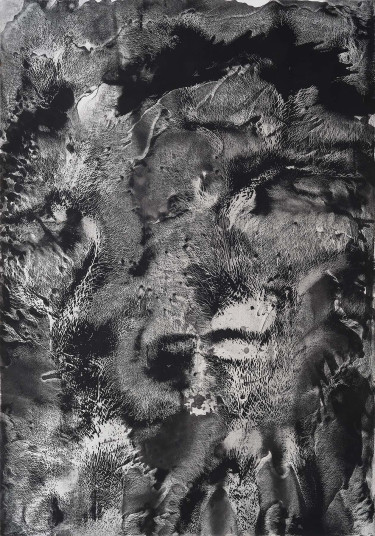
Sedimentos XXVII
Graphite on paper.
100 x 70 cm

Sistema trinchera
graphite on paper
17 x 24 cm
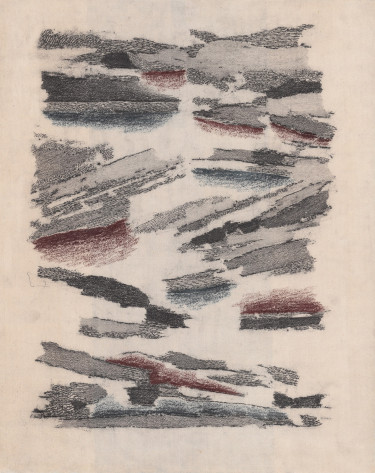
Mental landscape LVII
Graphite and colored graphite on rice paper.
52 x 42 cm
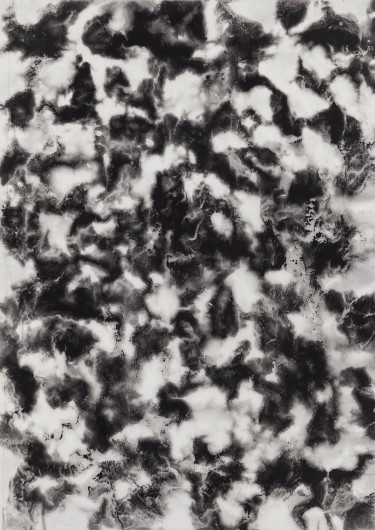
Sedimentos XIV
Graphite on paper.
80 x 60 cm
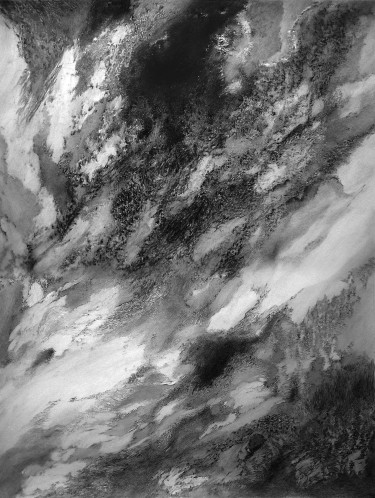
Composición II
Graphite on rice paper.
90 x 70 cm

En otro mundo la belleza es extraña I
Graphite on paper
140 x 250 cm

Mental landscape XV
Graphite on rice paper.
36 x 120 cm
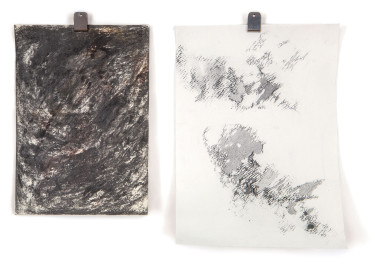
Estudio I y II
Graphite on paper.
29.7 x 45 cm

Mental landscape XII
Graphite on rice paper.
36 x 120 cm
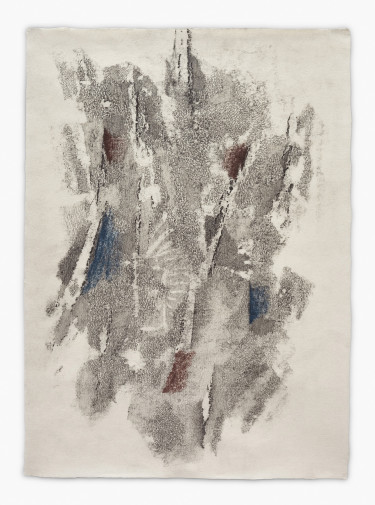
Mental landscape XXVI
Graphite and colored graphite on rice paper.
43 x 31 cm
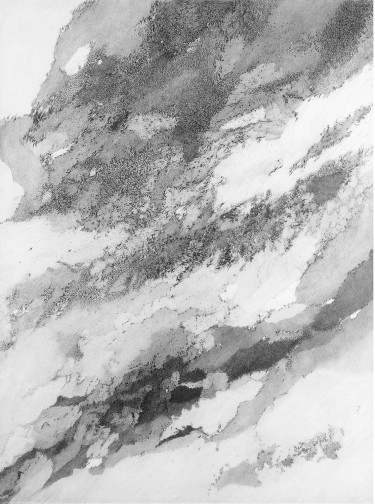
Composición III
Graphite on paper.
90 x 70 cm
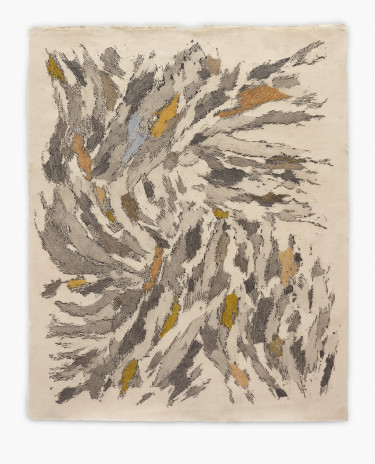
Mental landscape XXV
Graphite and colored pencil on rice paper.
52 x 42 cm
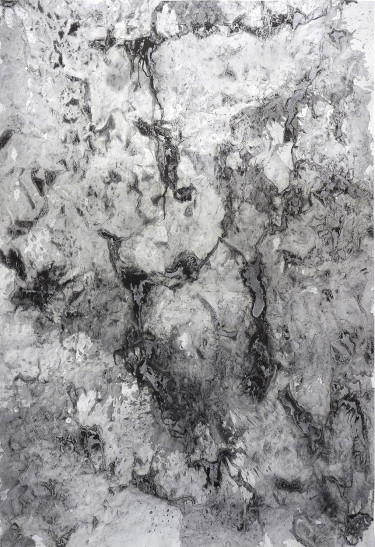
Sedimentos X
Graphite on paper.
300 x 200 cm

Mental landscape LVIX
Graphite on paper.
140 x 200 cm

Estudio I
Graphite on paper.
30 x 40 cm
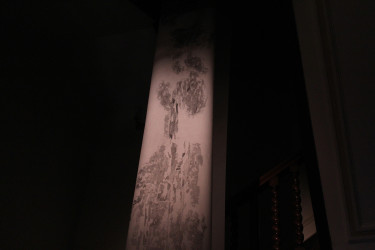
MÝO
Human Vocation Foundation
Buenos Aires, Argentina
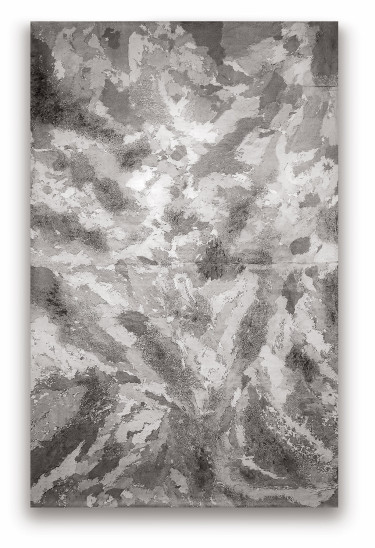
Mental landscape VI B
Graphite on rice paper.
192 x 120 cm
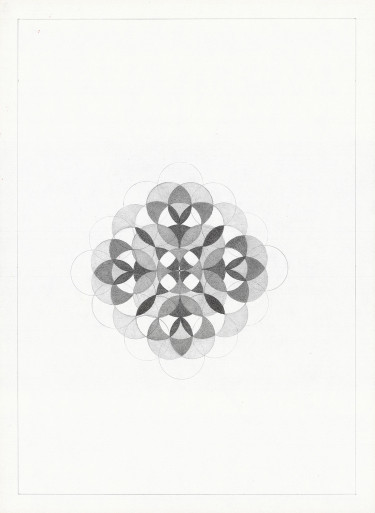
Mandala
Graphite on paper
42 x 29,7 cm
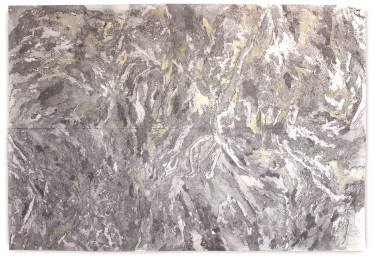
Mental landscape XVI
Graphite on rice paper.
144 x 220 cm
I never did anything out of the blue
TDS : It is important to point out that the exhibition in the gallery only represents a fragment of Mariana’s work, of her current work. In fact, whenever you are looking at one of Mariana’s pieces, you are in fact only looking at a fragment of her work, since her production is one uninterrupted continuum. Each piece is an episode, or a series of episodes part of a long story, where the sequence of these episodes can either be interchangeable or alternative. Her work is always unfinished, in constant movement and ongoing. Having started with drawings in a specific size, her work then expanded onto ever increasing sizes, up to many metres long, involving long and arduous procedures.
YKW : Benway associates Mariana’s work with the action painters from the abstract expressionist movement, which is comparable, because when you see Mariana at her work table, in front of large sheets of papers -even rolls of paper of up to 10 metres long, which cannot be spread out in their totality- she approaches her work from different angles, without any sort of previous planning. The resulting image is a documentation of that action, of the physicality of that action. Although the attitude is less vigorous and more meditative than the american action painters.
TDS : Yes, they are indeed different strategies. Although there is always a performative attitude in drawing or painting –which varies according to the levels of gestuality which goes with the process, and which depends on each painter- in the case of Mariana particularly her style has to do with using the whole body, where she sprawls herself over the work table in order to continue the drawing that appears to overflow beyond her, even physically; as if immersed in music and the artwork, as if the drawing were all encompassing. Consequently, in some of her works, Mariana appears to be representing ‘something’, whereas in fact she is representing her own action. What she represents isn’t so much a motif, but rather the proof of her own presence; and this presence is conveyed in different ways, in different times, with different temperaments, and different modulations. Her works are practically a sort of long cryptic autobiography, because it is impossible to translate what the works say of themselves.
Artists often begin with a sketch or a preparatory study, which they then carry out, and this allows for a certain distance with the work, a certain possibility for preliminary reflection. But when Mariana says “I have no objective, I begin with frottage” she is referring to a way of surrendering to the drawing, where the rhythm, definitions and contents that appear respond to a strong level of chance. In Mariana’s work there is a constant play between control and lack thereof, something like a controlled lack of control. The key in her work is the thoughtlessness and spontaneity, where the intensity of the drawing varies according to different moments in the day.
YKW : This way of working, sprawled over the work, as opposed to standing or sitting in front of a canvas, enables her to have a polyphony of perspectives.
TDS : Rosalind Kraus has a wonderful text where she mentions how the perception of the artist who works sprawled on all fours over the canvas instead of facing the canvas changes -such as in the case of Jackson Pollock- because the horizon line of the point of view is completely different. And you can see this in Mariana’s work: in her drawings there are images that seem to come from a specific point of view, and then suddenly, in the same drawing, you encounter images that seem to come from an aerial point of view. And then there are instances where Mariana herself appears to be part of the drawing, as if it were wrapping her completely like an inverted panopticon, where her figure merges into the scenery.
YKW : I also think that this merging that you mention, that can be detected in those fragments that seem to be drawn from different centres, also reflect the contemplative disposition with which she approaches all of her work. Mariana mentions that in order to draw she needs to be in a certain state of mind. “When my breathing slows down and my mind becomes blank, that is when the drawing materialises and expands, like some sort of organic matter”. So on one side these drawings are a reflection of her state of mind and its fluctuations, and on the other hand, there is the idea of letting go of one’s self, in order to listen, and allow what emerges to materialise from a dialogue, where the drawing either guides or is guided through Mariana. It is important to distinguish this process from that of merely unloading.
TDS : There certainly exists a paradoxical game where you are creating the drawing, but in the process the drawing starts to direct you. So one could say that, at a certain point, the drawing is defining you. There is a point of surrender, where one becomes the passive subject of the one that dominates, which in this case is the drawing. There are moments when one is the creator, and other moments when the work of art takes over. In the case of Mariana, there is quite a strong case of non-subjectivity when it comes to creating her work. By this I mean that her subjective intention does not go beyond basic decisions, such as the use of pencil and paper. She then gives into the evolution of the drawing, in its own time and development, and this is when the images emerge. Landscapes begin to materialise. Although I'd rather not use the word landscape, as I find its notion limiting and incorrect. The landscape refers to a specific type of painting, like a cut out from a larger scene, where one sees something that has a beginning and an end. And this is precisely why we are attracted to Mariana’s work, because of the lack of beginning and end, apart from in its formats and dimensions. In fact, one could also say this about her trajectory in general. The changes that naturally occur in all artist’s creative development due to a subjective proposition, in the case of Mariana occur because of her perseverance and commitment to one specific creative path, which lead her to explore and further delve into that same path, with the conviction that it is limitless; a path that enables her to discover universes for which she does not need to do anything other than surrender to the basic requirements and minimal implements that she uses. Mariana reproduces something fundamental and central to art, which is the ability to reveal an infinite universe with a single utensil.
YKW : I find it appropriate that you mention the ideas of landscape, and continuum in Mariana’s work. It appears that as Mariana progresses in her activity, the work increasingly becomes a flow of consciousness; and this is another reason why there can be no beginning nor end within this flow of becoming. As if nothing other than a specific time, or a certain way of being was being represented. The limits of the rocks and mountains are being diluted, and become permeable, until they seem to be nothing other than mere markings on large rolls of paper that hang from the ceiling, and need to be read vertically - something which differs greatly from the horizontal view that we are used to seeing when looking at a landscape.
TDS : Yes, I’d say that she is increasingly drawing more instances than actual figurative subjects, moments in time that represent being in that moment and in a certain way. What predominates is a more austere and less representative image, where the works become depictions of textures; where an aerial view becomes so distant that all that is left for you to see of the mountain are its textures. Sometimes they look like piles of rubble, and other times they look like little excavations in totally arid terrains, where there is no point in creating any other kind of figurative representation. That is why they transcend themselves and we can no longer refer to landscapes. Because what Mariana has been doing is demolishing any kind of recognisable representation, and what is left is this strong relationship with the materials, and the representation of the act of creating. As if the act of drawing was stripped bare, increasingly crude and direct. The idea of continuum becomes more and more prominent, where there is no more time left for details.
YKW : Yes, the images are becoming progressively stripped and strange. I think that the idea of unfamiliarity is a constant in Mariana’s work; present in her previous works of the canvas pools, skateparks and slides, they remind me of Robert Smithson’s anti-romantic idea behind his ruins in reverse. I am referring to those unfinished places with industrial remains -like unfulfilled promises- that elicit such strangeness. In her later works, the images look more like depictions of a faraway land that were photographed by an old recuperated telescope. They are like fossils of an extinct civilisation –for which we are the only witnesses- a call to reinterpret them and restore a sense of meaning.
TDS : They are uninhabited environments, and there is an invitation to inhabit them again, but in order to do that there needs to be some kind of initiation, as if in order to settle into this universe -which isn’t naturally accessible- one would need to go through a process of transformation. These aren’t welcoming places at first glance. In order to inhabit these places you need a certain level of austerity.
YKW : That’s true. They demand for one to go through a process of personal asceticism, practically like a kind of baptismal bath. Maybe this is due to the rigorousness, the constancy and discipline with which she realises her actions that her works have a certain aura of religiousness, the essence of a cloister, a rite…
TDS : And silence too. It’s interesting how there is always a play with silence, that’s the first thing that summons you. It’s an invitation to meditate and contemplate, and highlights a tradition in art which invites one not to simply walk past and look at things from the corner of one’s eye -which is a very poor connection or behaviour in front of a work of art. Mariana’s work calls, through its own nature and extension, for a personal connection with it; it transforms your relationship with the work into an experience. And the medium for that relationship with contemplation is the silence that the work instigates.
This is about a discipline which avoids being a spectacle as a condition for developing the work. The spectacle has something to do with supermarket shelves: which products shine the most or have the strongest colour, and call for our consumerist tendencies. Whereas Mariana, with few materials, a pencil, paper and a rubber -which I don’t even think she uses much- sets out to create large scale works. That relationship between the minimal and the grand establishes a framework for the development of the work that is both distinctive and outstanding. The magnitude of these works is surprising considering the materials she uses to create them, and she does it so naturally. This demonstrates her complete trust in the passion that drives her, and the power of the pleasure she derives in this constant work which produces the most sublime results.
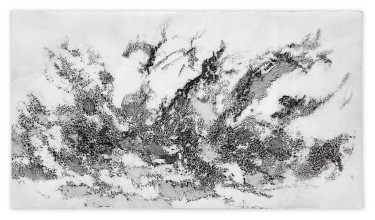
Mental landscape LIII
Graphite on rice paper.
42 x 60 cm
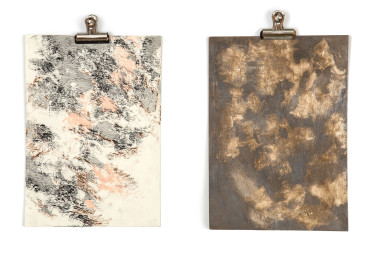
Estudio III y IV
Graphite, pastel, wax and bitumen on paper.
21 x 29.7 cm

La conjunción
Miranda Bosch
Argentina
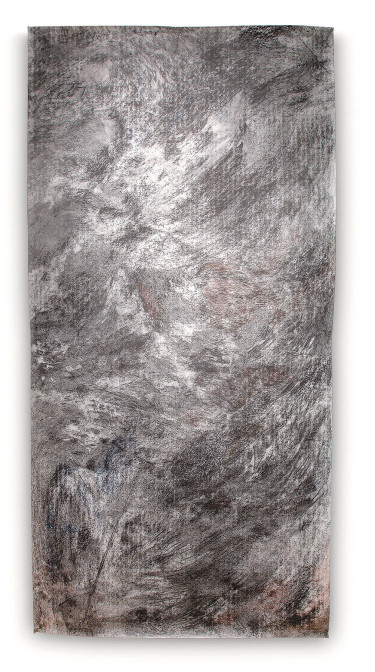
Mental landscape V
Graphite on rice paper.
200 x 100 cm

En otro mundo la belleza es extraña
Graphite on paper.
140 x 250 cm

Mental landscape XVIII
Graphite and colored pencil on rice paper.
70 x 180 cm
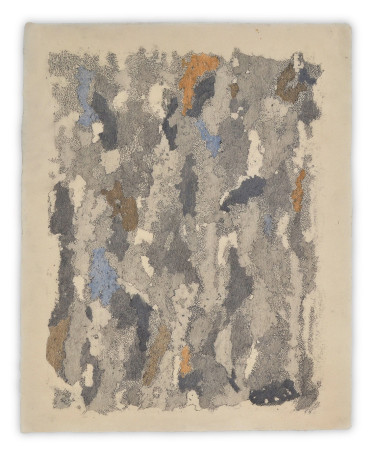
Mental landscape XXXVI
Graphite and colored pencil on rice paper.
52 x 42 cm
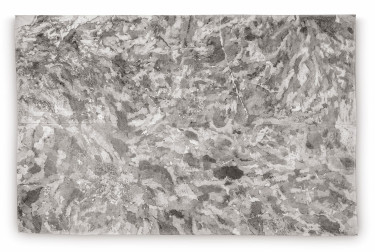
Mental landscape VIII
Graphite on rice paper.
200 x 300 cm
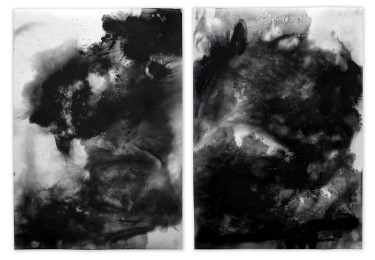
Estelar
Graphite on paper.
100 x 140 cm
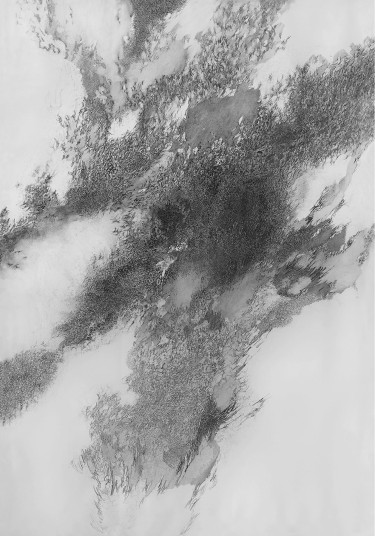
Sin título V
Graphite on paper.
200 x 140 cm

Sin título III
Graphite on paper.
100 x 140 cm

Sedimentos XV
Graphite on paper.
80 x 55 cm
At the center of a visual experience
Drawing is a category that extends beyond the “draughtsman”, it has its own expansive logic, that thinks for itself and moves ahead while breaking barriers. There are very good drawings out there created by draughtsmen, but also by an increasing number of artists from other disciplines who circumstantially pass by the technique of drawing; and who also use it as preparatory means for projects, such as with sketches.
One could compare drawing with poetry, because both are the nucleus and structure (of the arts and of literature respectively), and occur at the beginning, at the base of the creative arts into which they inscribe themselves; constantly expanding their limits and creating their own transformations.
Drawing is no longer about a line being drawn onto a sheet of papel. In its most free state, it can be a single thread that fills a space, like a gesture from a performative action.
At the same time, drawing can be a tool, a conducive element between different disciplines, because its matrix is simple, primary and economical. As it breaks its own limits, in constant evolution, in a series of transformations that go from simplicity to exuberance, a drawing can appear to be something else : a painting, a photograph, a sculpture, a texture or a text. The drawing has long been a very wide concept, as well as specific and metaphorical.
The idea of drawing as a gesture, an action, a practice and experimentation; as a consequence of a connection with the body (with movement and emotions); and that knowledge which precedes and exceeds the intellect (but which also includes it, through study and investigation) are all part of what Mariana Sissia brings into play in her work Ciclorama. The exhibition opened last Thursday, with other activities, in time with the beginning of the exhibition season of the Usina del Arte.
As Pablo La Padula explains very precisely, in the exhibition text: “Mariana Sissia’s Ciclorama is a fluid visual experience, which uses as a surface a 30 metre long sheet of paper, mounted on a specific support that enables a 360º immersive view, thus transforming the finite and limited into the infinite and cyclical”.
The site specific installation has a circular shape, with an entrance in which is implicit the helicoidal shape of the whole structure - an alluring shape that looks something like a lighter wooden version of Richard Serra’s steel structures. The outer structure of the installation is secured by what look like inverted crosses and counterweights - giving the piece a somewhat unsettling appearance (something about the weight of the cross).
Fluidity and continuity are essential elements of the piece. As the artist explains: “Ciclorama emphasises the relationship between the physical process that it entails to produce the work and the physical presence that is reflected in the specific process that occurs when working graphite, in powdered form, which I mix with solvents, as I explore the behaviour of the different materials as they meet, and the natural reaction that occurs beyond any control”.
Fluidity and continuity are essential elements of the piece. As the artist explains : “Ciclorama emphasises the relationship between the physical process that it entails to produce the work and the physical presence that is reflected in the specific process that occurs when working graphite, in powdered form, which I mix with solvents, as I explore the behaviour of the different materials as they meet, and the natural reaction that occurs beyond any control.’ One of the biggest revelations of this big drawing was to produce it on a 30 metre long roll of paper : this continuum gives the piece meaning, converts it into an all encompassing experience (when being created as well as when being contemplated) and in some ways it transforms the piece into one large landscape, placing the viewer into the centre of the experience.
What you see, as a consequence of the nature of fluidified graphite, is an abstract landscape made from a large-scale drawing which was produced as if it were a miniature (albeit spread over 30 metres). “I produce the drawings like a kind of journal - says the artist - I work on them rolling out a section of the paper, which I then fold away, before continuing another section the next day, without having access to what has been done until then. The whole piece reveals itself only when it is set up for exhibition.”
In its entirety, the work is made up of nuclei and sequences, of explosions and accumulations of matter. The logic of the materials concurs with the artist’s movements and gestures. The connection with the body, through a dynamic application of the graphite, creates stains, white, black, grey, lines, and stripes, and splashes and all kinds of sequences of juxtapositions and intensities, which altogether instantly entice one to pause at each fragment, and walk along, sometimes closer and sometimes further away, as the whole structure invites one to do.
“I think of my work as one continuum -Sissia writes- each drawing in an episode of a long story whose common thread is the minutious exploration of the material: the graphite.[…] Just as a seismograph registers the tremors that occur due to the movements caused by the tectonic plates, these drawings are a record of my emotional state”.

Mental landscape IV
Graphite on rice paper.
36 x 120 cm

Mental landscape XXVII
Graphite and colored pencil on rice paper.
80 x 57 cm
In other world beauty is strange
It is said that during his journey around the world Raymond Roussel not even once drew back the black curtains of his vehicle. By this brief gesture he went far beyond the idea that geographers, naturalists, cartographers and artists have lent weight in the past. No matter the purpose, making a landscape was no longer enough to satisfy the will of understanding the world. No longer it soothe ethnographic curiosity. No longer it allowed determining the ranges of prettiness, beauty and sublime. Only photographic tourism continued considering landscape worthy in terms of reproduction, and not a merely incidental fact. However since Roussel’s witticism, it is not a matter of forgetting to landscape, but to search those sensitive zones where these impulses persist, where this way of visual appropriation of space still works, what configurations are the ground for these problems to appear even today? From natural space, enough codified, Mariana Sissia’s drawings take us to outer/inner space of things. Her conceptual value is to realize that what once was painters’ responsibility, nowadays is being assumed by technology, specifically, by remote sensing techniques, gadgets that pick up images there where no human eye reaches. That is why we do not know yet to what extent these satellite and microscopic images have impacted in landscape history. If this history is to be done, In other world beauty is strange, the installed/drawing by Mariana Sissia pictures itself as an intercessor, a future document, a lost shot. By bringing together the fundaments and ways of producing these images and drawings skills, she is able to avoid anecdote and display, by the same move, a panoramic view of what once was called an heterotopy: other place, unrecognizable, strange, impossible to incorporate to our human sightseeing. Indeed, if classical landscapes postulate body as the measure of space and subjectivity as its perceptive scale, remote sensing deprives this old phenomenology of its constitutive basis, there is no direct contact with the object, there is no eye observing. At the end, what is left is what was there at first: visual data processing. So Sissia operates against the aesthetic look, she turns drawing into an exploratory instrument with no intentions of reproducing landscape, but of producing it, without making drawings look alike with nature, but the other way around. Poiesis, not Mimesis; percepts, not perceptions. Therefore the technical decision is to subdue the eye, or even better, to implant in the hand an eye for its own. This inevitably postpones any sensitive act –to suggest a story, to confess an idea, to exhibit a secret- in order to put in the first place the physical act of drawing. The pencil`s angle, the speed and length of traces, the graphite ́s hardness, the opening of the lines, the use of blanks, the stratification of grey and, in a painter`s excess, the accumulation of layers. All these compose wide range of graphic procedures applied to the appearance of forces, intensities, rhythms, interferences; the track of ongoing processes, of objects that have jus disappeared, of borders that do not close on themselves. The urgency of the hand seems to be geared to prevent image from defining, none, never, as if conceding to that temptation implied to be once more in the field of privacy, of incidental, of subjective explanations. Nevertheless, drawing, its tension upon vision, its nature exposed to contingency, is always a kind of direct negotiation with immediate environment. Mariana Sissia choses to execute a disappropriation, in order to save, not the world`s consistency but its outlines, not images but resemblances, not beauty, but certain beauty.
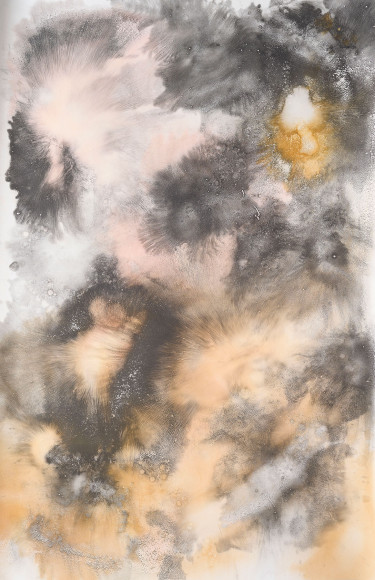
Sedimentos XXXII
Graphite and pigment on paper.
140 x 89 cm
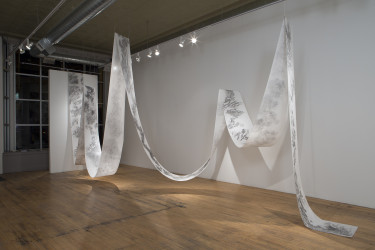
Mental landscape
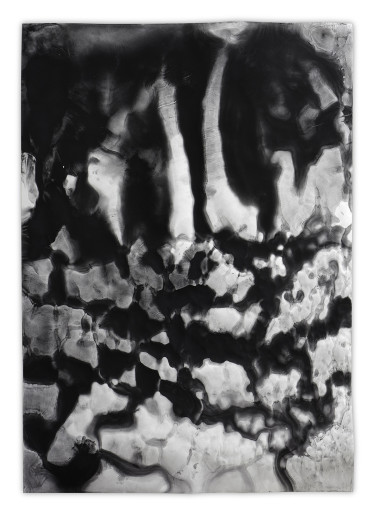
Sedimentos XIX
Graphite on paper.
200 x 70 cm
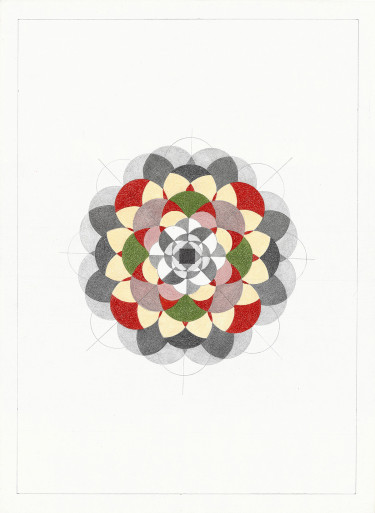
Mandala I
Graphite on paper
42 x 29,7 cm
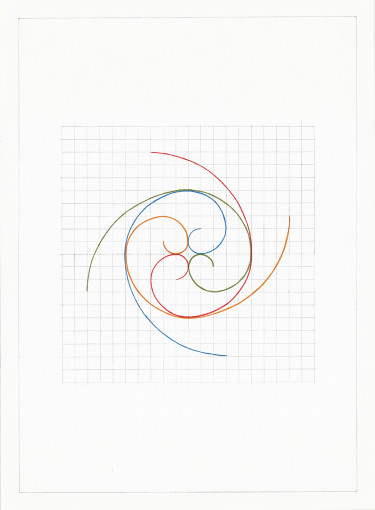
Mandala V
Graphite on paper
42 x 29,7 cm
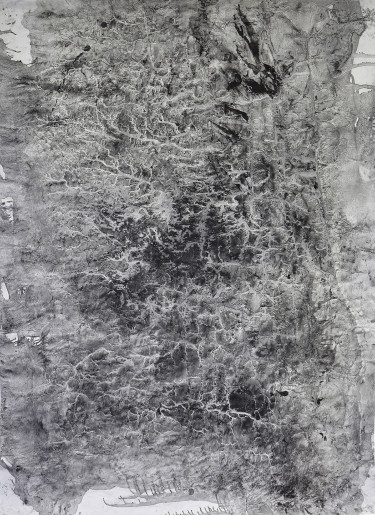
Sedimentos IX
Graphite on paper.
200 x 150 cm

Dos paredes
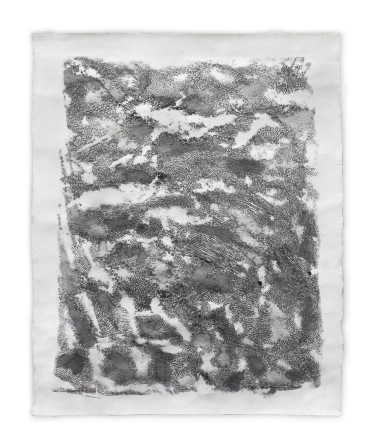
Mental landscape XLIX
Graphite on rice paper.
64 x 50 cm
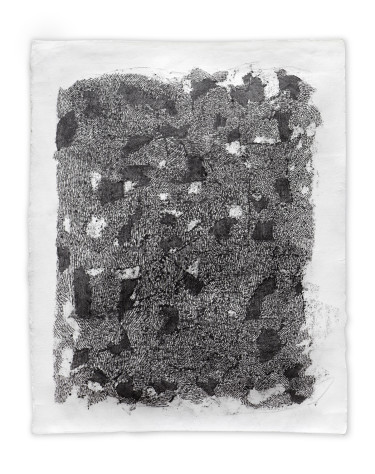
Mental landscape XLVIII
Graphite on rice paper.
64 x 50 cm

Sedimentos XVIII
Graphite on paper.
80 x 55 cm
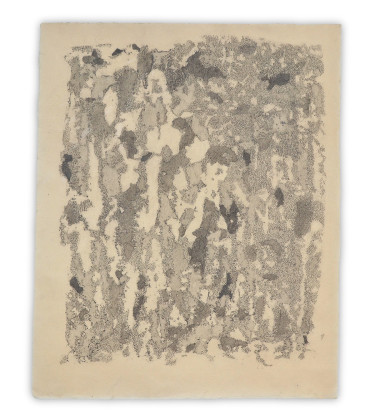
Mental landscape XLII
Graphite on rice paper.
52 x 42 cm

Mental landscape LXIV
Graphite on rice paper.
36 x 120 cm

Paisaje Mental II
Big Sur
Argentina
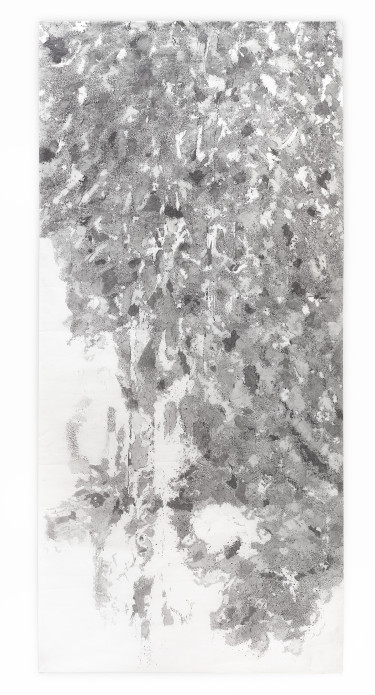
Mentallandscape XLIV
Graphite on rice paper.
207 x 100 cm
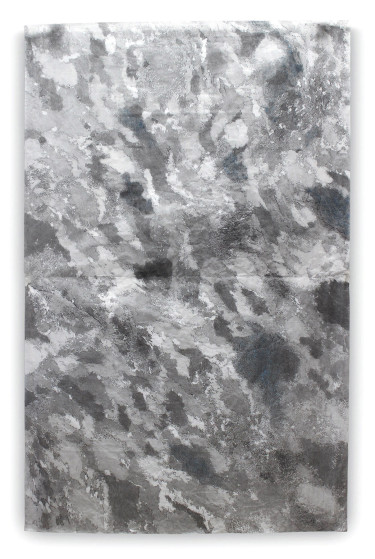
Mental landscape XVII
Graphite on rice paper.
200 x 100 cm

Mental landscape XXXIII
Graphite and colored pencil on rice paper.
64 x 50 cm
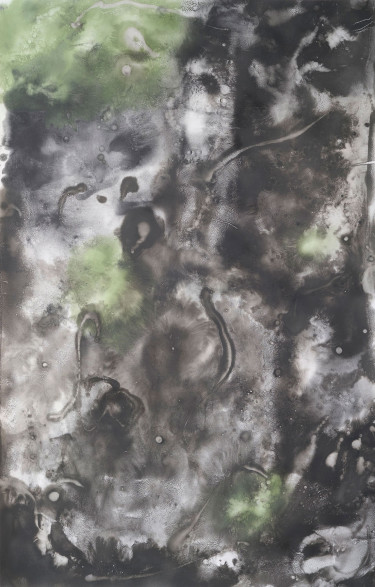
Sedimentos XXXIV
Graphite and pigment on paper.
140 x 89 cm
Mariana Sissia's Cyclorama, or the search for the infinite and indeterminate universe
Mariana Sissia’s Ciclorama is a visually fluid experience, which is spread over a 30 metre long sheet of paper, mounted on a structure which enables for a 360 degree immersive view that transforms the finite and limited into the infinite and cyclical.
Ciclorama is Mariana’s first drawing attempt, on a very large scale, to move away from the determined handling of graphite which she masters so precisely and perfectly. Her strategy here is to work with the medium, but in a powdered form, by taking advantage of its lack of precision and volatility, as a means to inundate rather than delineate. She achieves this liquidity in the drawing, by literally colliding the pulverised graphite with organic agents and solvents. These elements –which due to their physicochemical properties, repel each other– achieve a dialogue with the emulsion, and when amalgamated, produce an infinite number of visual epiphenomenon.
These thirty metres of paper act as a real time laboratory document spanning over several days. Here the idea of the drawing as a single visual unit, transforms its graphical quality, and moves the spectator through unique eco cosmologies: from poetical introspective otherworldly landscapes, to proto-celular structural microcosmos.
But what is also remarkable about this vast drawing, constructed from Chance and Necessity (sic, Jacques Monod, 1970), is that it becomes a true mechanogram of the artist’s emotional pulse, of her thought and corporeality. In her attempt to expand a world defined by the solidity of graphite, Mariana Sissia arrives at an abyssal, indeterminate universe, made strange by the toxic and intoxicating presence of solvents. There, the certainty of craftsmanship, dissolved by fleeting visions and topographic accidents, becomes the echo —or the evidence— of a portal to epiphanic spiritual freedom.
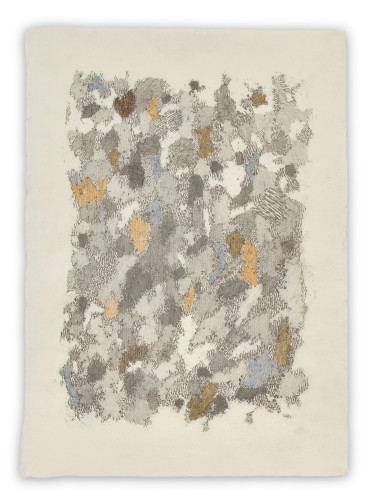
Mental landscape XXXVIII
Graphite and colored pencil on rice paper.
43 x 31 cm

Mental landscape XXI
Graphite and colored pencil on rice paper.
80 x 57 cm

Mental landscape XIV
Graphite on rice paper.
36 x 120 cm
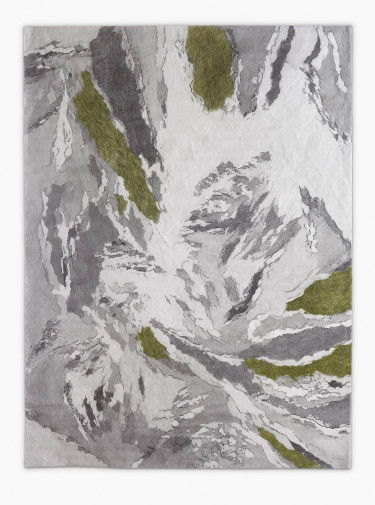
Mental landscape XXIV
Graphite and colored graphite on rice paper.
129 x 97 cm
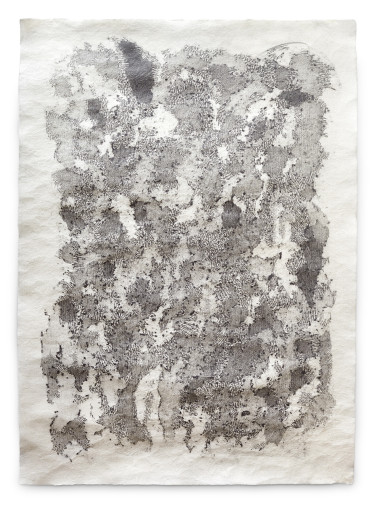
Mental landscape XXVIII
Graphite on rice paper.
43 x 31 cm

En otro mundo la belleza es extraña IV
Graphite on paper
140 x 250 cm
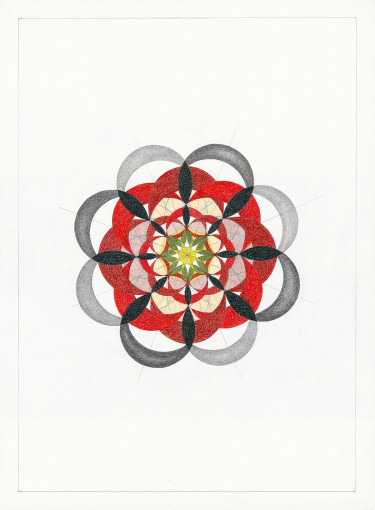
Mandala II
Graphite on paper
42 x 29,7 cm

Encuentro I
Graphite on paper.
200 x 500 cm
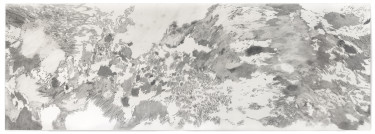
Mental landscape LX
Graphite on paper
140 x 400 cm

Mental landscape IX
Graphite on rice paper.
36 x 120 cm

Mental landscape XX
Graphite on rice paper.
76 x 46 cm

Mental landscape XLI
Graphite and colored pencil on rice paper.
52 x 42 cm

Sedimentos VIII
Graphite on paper.
200 x 150 cm
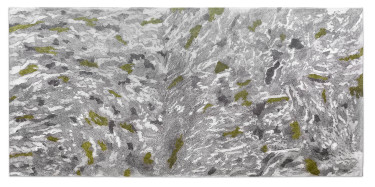
Mental landscape XXXII
Graphite and colored graphite on rice paper.
97 x 200 cm
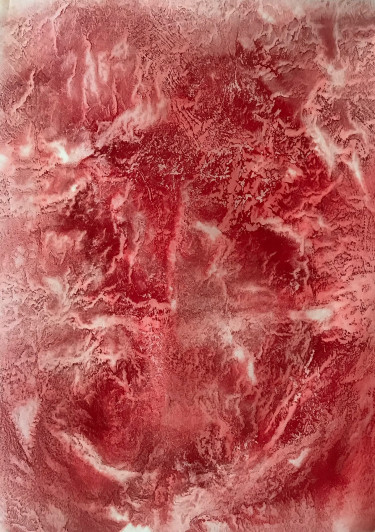
Sedimentos XX
Pigment on paper.
80 x 55 cm
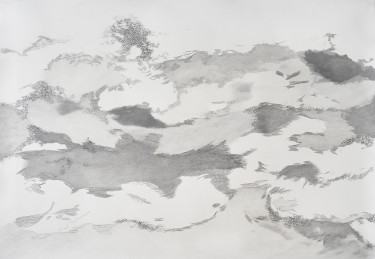
Mental landscape LIX
Graphite on paper
140 x 200 cm
Drawing as a spacial experience
“People should talk less and draw more. Personally, I would like to renounce talking completely, and communicate everything I have to say visually, like organic matter does in nature”. Johann Wolfgang Von Goethe.
Those of us who write about art have a problem. In fact, we have several problems, but one of them that stands out the most, and it’s the one that tells us what we must write about and what we have to say about what we see. Some critics choose the critical approach, and others choose to inform and analyse. In a recent interview, Felix de Azúa commented that he no longer wants to write about art, because he regards it as dead, and says that it is an activity which is only related to pleasure and tourism.
Paul Valéry, in an attempt to resolve this problem, suggested that a work of art that doesn't leave us breathless has no value, and that the only thing we can do is reflect the love that permeates the world through the beauty of a work of art.
A space like the Usina del Arte is of great help when it comes to the idea of leaving one speechless. Its magnificent monumentality, the cobbled paths, the little tower and its red bricks are a great contrast with the modern interior filled with iron and huge windows.
In the vast room on the second floor stands Mariana Sissia’s “Ciclorama”. The distance that separates the stair landing with the work of art is a good excuse to prepare the spectator and predispose them to participate with what the artist intended with this piece. At first one sees a wooden circular structure, with a diameter of 10 metres, with supporting beams and weighted bags that act as counterweight. As one gets closer, one sees the entrance to the circular structure, and is invited to walk in and engage in a journey filled with dualisms that are sustained in drawings, as an artistic experience.
It is well known that a good work of art offers many interpretations and provides an infinite universe of emotions and analyses, but what stands out in Mariana’s proposition is the amount of intersections and dialogues that she leaves open for interpretation. The spectator most certainly will have their own, but I would like to present just a few here.
The most important is the disciplinary. There is no doubt that contemporary art has very much diluted the limits of artistic craftsmanship, but “Ciclorama'' goes beyond that. There is no doubting the protagonist of the drawing, but the shape, the vision that is presented to the spectator, and its relationship to space all lead to a sculpture. This work reassesses those limits in a gentle but intense way, by disorienting the point of view and establishing a sensorial experience of immersion and introspection.
WIthin the open wooden structure, a 30 metre long sheet of paper presents a cyclical landscape, where the drawing appears charged with historic and communicational trajectory. This work of Sissia’s represents in fact the evolution of her biography as an artist. Like all life stories, it has its continuities and its ruptures. The lines, very much a reflection of her work method, are the same as in her other works, but what is new here is how the work occupies space, and its final result.
This huge sheet is also more than 2 metres high, and is worked upon in fragments combining a double technique of graphite and solvents, which reveal a diversity of patterns in varying intensities. The experience of interpreting this whole cycle is comparable to that of reading a private journal or a newspaper: it combines all kinds of emotions, news, and emphases merged into one large piece made of fragments.
Mariana’s technical ability is impeccable. She is so confident in using these materials, that what emerges is a total freedom in how to use them and interpret them. The way she pours the solvents on the paper and the varying textures of the graphite are typical of her calligraphic style, and she renders apparently spontaneous something that comes from a quasi-scientific research. Each spill and fold in the paper responds to a meticulous and deliberate process more akin to an alchemist rather than a draughtsman. The atmosphere that is generated emanates from this virtuous esoterism, and it is unlikely for any visitor not to experience it.
Another dialogue that “Ciclorama” proposes is the one about the limits between the inside and the outside. Sissia provokes a conversation through the shape of her work, and makes it inevitable for the spectator. “Ciclorama” is an uncertain pathway from the outside inwards, and the shapes and drawings act as the mode of transport. A drawing which also mixes abstract and figurative elements. Sissia’s abstract approach in this work is clear, but one’s eyes play tricks on us, and so sometimes they, “gestatically”, configure a face, a landscape, or a human figure.
Walking through Ciclorama challenges the premise of the finished —and even deceptive—condition of contemporary art. It combines classical elements with a fresh temperament. It evokes artistic memory —it's hard not to feel as though you're inside one of Richard Serra’s monumental structures, softened by the smoothness of paper—. It stirs a quiet, necessary contemplation. Such a caress to subjectivity is a sign of vitality that renders one speechless and casts a generous dose of love into the world.

Mental landscape
Graphite on rice paper.
70 x 250 cm
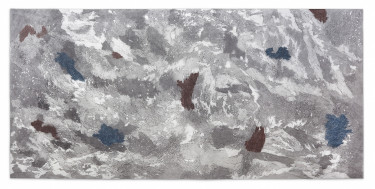
Mental landscape XXIII
Graphite and colored graphite on rice paper.
97 x 200 cm

Mental landscape X
Graphite on rice paper.
36 x 120 cm
Meditated matter
The visually delivered message plays on our experience and imagination with all the power of a verbal language, arousing feelings and thoughts, memories and fantasy, and releasing stores of mental energy. In our personal encounter with painting, there may be no need to translate this language into any other, no need to transform visual images into words. The visual image is a self-sufficient reality which verbal translation can do no better than very crudely approximate.
Jerome Silbergeld, Chinese Painting Style, University of Wash- ington Press, 1982.
Earthly materials, as soon as they are grasped by curious and brave hand, awaken our drive to work them over.
Gastón Bachelard, La tierra y las ensoñaciones del reposo, Fondo de Cultura Económica, 2006. (English title: The Earth and Reveries of Repose.)
I
The first drawing by Mariana Sissia that I ever saw showed an excavation, a seemingly deep pit, faithfully represented on the plane—that is, in the ground—at the end of a diagonal axis. Placed at a slight remove from the pit, just a little higher and to the left, was a perfectly rendered mound of earth produced by the act of digging. Beyond its quality —more remarkable still considering the young age of its author— the drawing was striking in that the natural direction of its reading seemed to go against the completed act of digging. A tension seemed to pull the earth into the pit, as if a tacit force called the earth to fill the hole back up—an effect heightened by the weight of the pit in the composition. This kinetic induction established a connection with the paradoxes of representation. Early on, then, Sissia was reflecting on the dilemmas of her métier, in terms of both the construction of the image and of the active exercise of drawing, in the form of a concealed allegory or as an intentional metaphor.
Like other scenes by Sissia akin in constitution or poetics, this excavation seemed to suggest a conception of drawing as a painstaking and radically physical task operated on a surface. One advances in the drawing by grinding the material on that first outer layer, searching for a less explored hidden plane; sediment is left along the way as part of the same phenomenon, of the same figure, which is not only a specific formal presence but also an instance of visual rhetoric. A sediment that threatens at times to obstruct or to drown visibility, the breath of what has been revealed.
That drawing astonished me due not only to its specific virtues, but also because it stood out from various works on paper by other young artists —as young as Mariana herself— also featured in the group show where I saw the work. Sissia’s style and graphic approach were even more striking in a wider context —the year was 2010— marked by less and less probity, wisdom, and mastery in the craft of drawing and by an endless number of faltering, rudimentary, unlearned proposals, some of them deliberately clumsy and crude. Sissia’s work was grounded in a completely different philosophy of action, one explicitly dedicated to the vocation of drawing for the sake of expressive and practical ends almost demented in the orthodoxy of their approach to the tool; she seemed to have something like pious devotion to an unwaveringly uniform and endlessly rich line and tone. And that which was so arresting at that time has continued to be one of her distinctive traits; it has not shifted or faltered since that early moment, despite various stages in her production.
II
During that same period, Sissia focused on a specific set of scenes, making use of recognizable elements like water tanks, above-ground swimming pools, scaffolding, and groups of trees generally placed on blocks or large clods of ground or floating intact on the plane. They seemed to make reference to the instructive rhetoric of technical or industrial manuals in a gesture somewhere between surreal estrangement and a kind of improvised metaphysical synthesis. Some of these works proposed other variations on the gathering of ground without the aid of any accessory.
A theatrical quality, dramatic tone, and concordance of other logics both progressive and destructive makes itself felt in these works with their cuts and gaps, their bite marks and plates, their rocky slopes and smooth segments, which the titles identify as tunnels, caves, caverns, walls. The artist moves skillfully between fantastical feints, insinuations, and resonances, and we suddenly have the sense we are before a protoscientific document intended to illustrate the architecture of anthills or termites’ nests; we have the unsettling feeling that we are examining animals’ dens or caves or exploring an inventory of construction sites, an engineer’s notebook.
The polysemy and breadth of Sissia’s method and procedure is striking. It partakes strategically of the iconography of geology and of the speleological universe, as well as simulacra of transcriptions of archeological field notes that she recreates in, for instance, a chain of references to public installations as contemporary as skateboard parks, their tracks here turned into dried fossil remains. As they plunge into the rugged ground, these even pits and ditches are steeped in duplicity, armed with a certain objective rationality, but also infused in the dizziness of the bizarre, as if the hidden life of a concealed underworld quivered within that illusory earth.
At the same time, one has the distinct impression that the one who makes these drawings does so knowing full well that her steadfast affirmation of certain figurations or contents, her use of motifs like intact or lacerated rock, perforated or solid ground, are an analogy for the endless penetration of drawing in the drawing itself, suspecting —or knowing— that man can dig in rock, but all he will ever find is the rocky. (Ibid)
The will to look inside of things makes vision sharp and piercing. It turns vision into violence as it discovers the fracture, the crack, the gap through which the secret of hidden things can be violated. (Ibid)
III
With clarity and surgical precision, absolute mastery of technique, vast attention to detail and enormous productive capability, Sissia’s drawing rummages in its own expanded body. Year after year, she hones her instruments and resources tirelessly. Steadfast, she trains the subtle muscle of her sensitive repertoire, adding elliptical alterations and transfigured correspondences. In a single but twofold act, she combines legible access and uncertainty. Her frictionless formula risks with almost naturalist fluidity the synthetic incrustation of foreign agents in worn mounds and terrains. It is in this form that slides and other items from playgrounds, ladders, drains, fences, and makeshift bridges come before us and justify their role as ghostly props. In this period of her production, like its later regions, Sissia’s comprehensive elaboration of drawing depends strictly on her thorough control of the strokes —lines in, evolutions, landscapes, fillings, degrees of pressure— with the pencil or graphite bar on paper. Her treatment is geared to sustaining the dense substantiality and seamless corporealness of the planes that make up her large objects and structures. She worked for a spell on sheets of paper with plastered surfaces though the grain does not interrupt the drawing’s optical disposition. Equally effectively, she would later make the porous and somewhat coarse support intervene in the drawing as a new and suggestive textural sign.
In relation to the spirit that seems to move them, though, the sharp earthy incisions and even depressions suggest precarious and primitive handiwork as well as a greater economy of means now on an industrial or project scale. Both hypotheses converge in the geometric regularity of the line in architectural blueprints, compromisingly rendered abysses while soothing foundations become orthogonal collapses in the earth’s crust. With chilling coldness, a grave appears as well as part of what might be a reference to a virtual catalogue of the cultured uses of the earth.
Everything serves to further unlikely anecdotes and mild tensions. The human factor is an absent presence, and empty city lots with melancholic waste are fanatically displayed to the torrid whiteness of a plane that is territory and space as well as negative force. What stands out in this singular mix is the brutal excision, the wide and square scar that Sissia calls Trinchera [Trench]. It takes shape at the center of energetic gravity of one of the many remarkable series in the course of her prolific production.
The sense of uneasiness, of an improper use of gadgets as steeped in connotation as they are dated and, therefore, useless —stuck as they are in the perpetual present of the anonymous scenes of excavation and unearthing— makes time a farcical presence; the irony of a use of time that is cultural and social, but also an anachronistic nightmare. Once subject to vital actions and movements, the situation and its parts are now frozen forever and, like a collection of urban fetishes, artificially placed on a neutral background.
IV
Though resolute, the systematic change of course that Sissia begins to effect makes itself felt gradually. It entails a radical change in perspective and in the design and use of the spatial vraisemblance. Sissia will hover over craters and depict hillsides, summits, crags, and mountainous peaks as she wavers between mimesis and imaginary invention. In the smallest details of these disruptions in the land lurks the resounding transition that would irrupt in the overall conception of her project and lead her language to take root at a fruitful threshold. She will now begin to skillfully depict collapsing chalky walls, rugged peaks, and canyons and to manipulate counterpoints and combinations of networks, linear weaves, and gradations of gray embedded in evanescent layers of graphic epidermis. These deceptions exist in a limbo of sheer appearance and, hence, can be seen as organic abstractions or as a sort of solid wall that becomes diaphanous suddenly, its physiognomy unstable and shades changing. More than ever, the artist works on the basis of antagonistic structural premises as expansive as they are muddled as they encroach on the entire visual field like a pan shot. These works look like unknown cartographies, boundless aerial views of a conjectural plateau or, in more terminal manifestations, lush camouflages.
The vigorous making of these works does, in fact, attempt to emphasize, albeit gradually, the grain in the tenuous vibration of the stroke on the paper or to hide it by threading together, at an intimate and steady pace, the nodules, lumps, and cells yielded by the endless workings of the pencil. The thickness, weight, and varying coarseness of the support silently bind together the whole. After all, Sissia is suspicious of anything that might be seen as a shortcut or as a facile and flashy effect. Startlingly, in these works accents, contrasts, and emphases rendered by means of frottage appear as well, orchestrated in the ecology of the whole with an inalterable organic quality.
We should linger further on how Sissia crosses that vast terra incognita which, like an expert explorer, she has discovered, armed with pencils of varying gradation and with graphite wielded like arrowheads, sharp vehicles to supply a much needed dose of options and registers. There is no room in drawing —or, rather, in Mariana Sissia’s act of drawing— for turning back or for correction. Her approach is always head on as she leaps into the void without flashy acrobatics, embracing instead the challenge of constancy that affords no hesitation or scars regardless of how many precautions and decisions she may have made on how to give shape to each individual work. Sissia interrogates the appropriations, adjustments, consistencies, couplings, and dissonance of drawing, rendering with virtuosic stubbornness generative, rough, and ashy dots, segments, lines, rays, and tiny scribblings to form constellations with changing skin that can be read in turn as conjectural depth, sky, earth, pond, map, hydrographic basin, maze, wall. Her recent works go beyond that initial allure and enchantment to cross the frontier of her own ontological threshold, at once representative fiction and informalist project. The various formats of the support are shattered into extreme instances in, for instance, the magnificent and landscape -like panorama made from horizontal pieces assembled in a contingent sequence like the semicircular mirage of Claude Monet’s Nymphéas or an abstract version of the Buddhist narrative scrolls that reached China from India. Similarly, the long vertical scrolls of rice paper redistribute her work and provide another reading of the image perceived as a dissected dynamic whole rather than as a mere link on a chain. All of this entails not only a new Eastern perspective, but also a redoubled determination to test out and to experiment in terms of the internal and external dematerializations and the installation -like environmental variations these works propose.
V
The notion of graspable and real time is accentuated on the cognitive level by the remarkable oneness that Sissia manages to achieve despite the radical heterogeneity of the scenes she depicts and the evident material density in each and every work. We have a sense of hours and hours spent on methodic and taxing toil, slow and demanding work that requires full attention, awareness, and motor skill. This can only be achieved by an artist well trained in navigating the relationship between creative drive, manual perfectionism, and profound subjective alertness —all of which Sissia brings together in a systematic and meditative practice. An encounter, a tension, a struggle of thicknesses and substances that ensues between the interior productive forces of the Homo faber and the limits of the expectant material. It is the resistance, the hostility of matter (Ibid) that must be brought out into the world and shaped. Inert, it is steadfastly fleeting, straining, and evading the very one who would give it origin, breath, vitality, and sensation. Sensitive avatars, amorous conflicts, sacrifices and discoveries experienced by those who, like Mariana Sissia, give themselves over to the all-encompassing monastic rite of meditated matter (Ibid) which, for her, goes beyond matter at the service of art.
With such wrath imagination seeks to explore matter! All great human efforts, even when they are external in form, are harbored in intimacy. (Ibid)
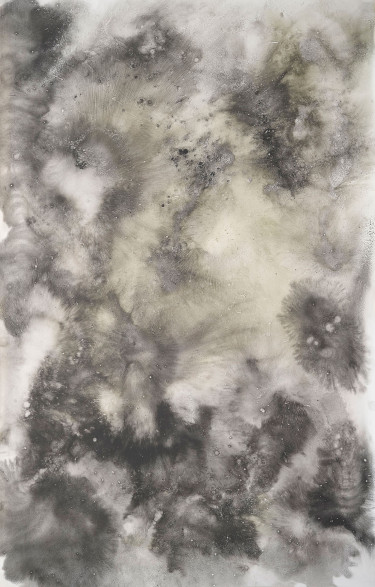
Sedimentos XXXI
Graphite and pigment on paper.
140 x 89 cm
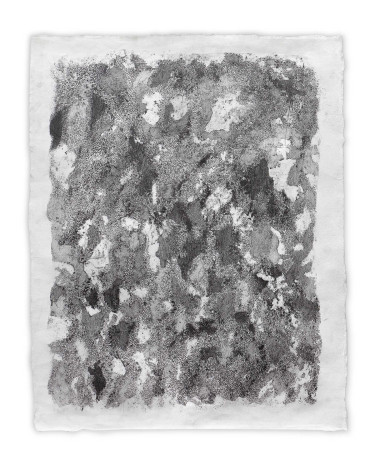
Mental landscape L
Graphite on rice paper.
64 x 50 cm

Mental landscape LIV
Graphite on rice paper.
200 x 150 cm
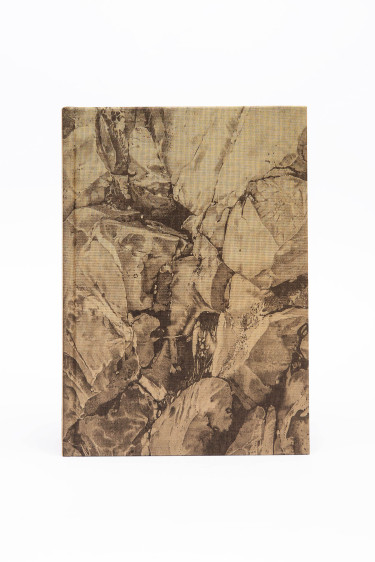
Mental Landscape
17 x 24 cm, 200 pages
Published by KBB

Mental landscape XLIII
Graphite and colored pencil on rice paper.
52 x 42 cm
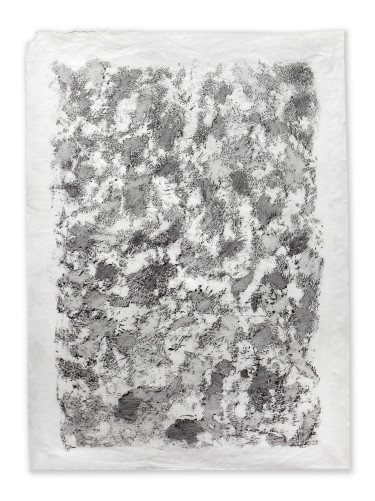
Mental landscape LII
Graphite on rice paper.
78 x 57 cm
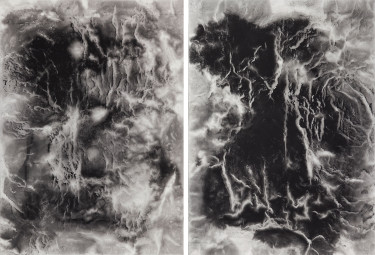
Sedimentos XVII and Sedimentos XXVIII
Graphite on paper.
80 x 110 cm
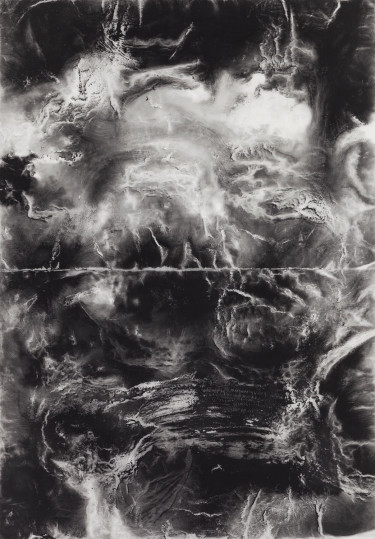
Sedimentos XII
Graphite on paper.
100 x 70 cm
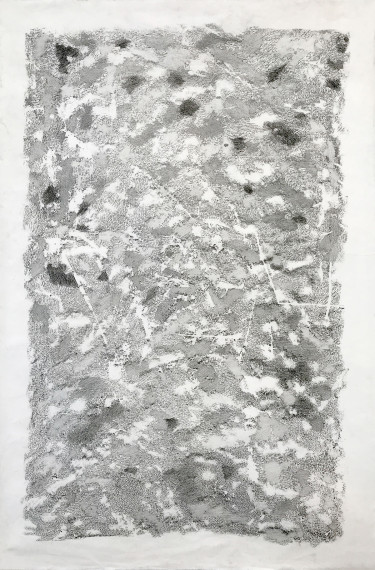
Mental landscape XLV
Graphite on rice paper.
100 x 66 cm
The triumph of landscape
As an extension in space, then, the line is also an extension in time. Not time in the sense of measurement of a finite duration, but rather time that just goes on ad infinitum. In Mariana Sissia’s new drawings Mental Landscape, we find, not a place nor even a point, but a conception in the mind. Sissia calls this series of work Mental Landscape, where the artist traces an order that one cannot quickly grasp, the order of emotions and sensations, something similar to the feeling of your own skin, your hair or your body. Sissia’s drawings are not a “thing,” but a layer of a thing that proposes an order that can be contained in paper. Their space is both physical and abstract –concerning materials and matter, and escaping precisely being a thing. Using rice paper, Sissia creates large scroll-like drawings, with extreme dedication, patience and caution. Known for its use in 19th century Chinese painting, this thin material is delicate and un-textured. Sissia starts by applying “frottage”, a graphic art technique developed by surrealist German artist Max Ernst in 1925, to create a basis for further refinement. Sissia rubs over textured surfaces, such as cement floors, walls, and stones, which she then intensifies and marks with graphite of different scales. She refers to her method as “temperamental,” slowly building a landscape that develops according to the artist’s daily energy. These passionate scenes are investigations of materials –resembling masses of air or pieces of sky, ethereal realms. Sissia’s skies remind the ones by Argentinean artist Oscar Bony in the mid-1970s. What seems to be a banal topic, the sky becomes an intense metaphor for freedom. Sissia, like Bony, cuts the skies loose, separating them from the infamous world of figures. Here, matter reaches the sort of complexity we find in the human brain. Similar to the philosophical position or the belief that conscious- ness is a universal feature of all things, Sissia attempts to extend herself into the environment and to work with its problems and events. She becomes aware of her own body, in a way that has nothing to do with the accepted idea of the self-portrait, but more with the questioning and observing of sensations. The absence of figures and human bodies in the landscapes give a sense of “loss of touch” –not only with ourselves and with each other, but also with the culture of which we are a part.
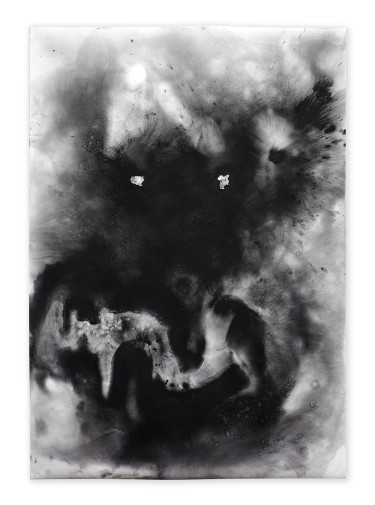
Ser
Graphite on paper.
100 x 70 cm
Mental landscape XLVII
Graphite on rice paper.
64 x 50 cm